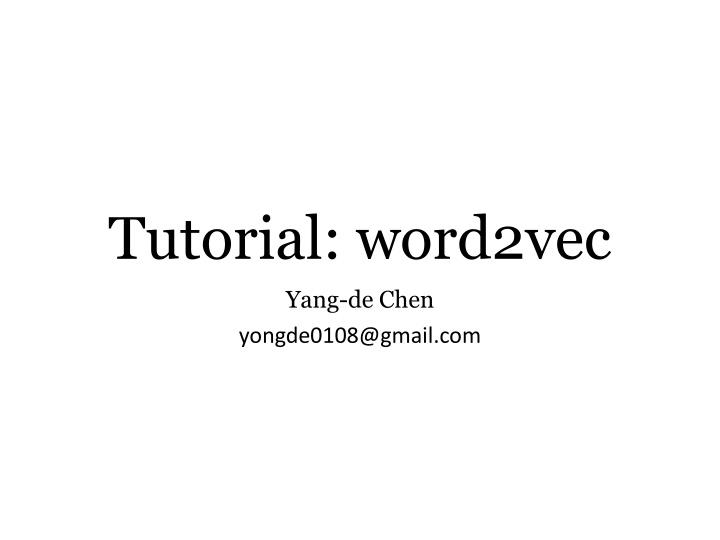
Mastering Word2Vec for Efficient Word Representations
Learn how to download, compile, and train Word2Vec models using Continuous Bag of Words (CBOW) and Skip-gram techniques. Represent words as vectors, conduct training, and explore word vectors' applications. Dive into analogies and related word searches using trained models. Find downloadable datasets for practice and discover insightful results in word vector analysis.
Download Presentation

Please find below an Image/Link to download the presentation.
The content on the website is provided AS IS for your information and personal use only. It may not be sold, licensed, or shared on other websites without obtaining consent from the author. If you encounter any issues during the download, it is possible that the publisher has removed the file from their server.
You are allowed to download the files provided on this website for personal or commercial use, subject to the condition that they are used lawfully. All files are the property of their respective owners.
The content on the website is provided AS IS for your information and personal use only. It may not be sold, licensed, or shared on other websites without obtaining consent from the author.
E N D
Presentation Transcript
Tutorial: word2vec Yang-de Chen yongde0108@gmail.com
Download & Compile word2vec: https://code.google.com/p/word2vec/ Download 1. Install subversion(svn) sudo apt-get install subversion 2. Download word2vec svn checkout http://word2vec.googlecode.com/svn/trunk/ Compile make
CBOW and Skip-gram CBOW stands for continuous bag-of-words Both are networks without hidden layers. Reference: Efficient Estimation of Word Representations in Vector Space by Tomas Mikolov, et al.
Represent words as vectors Example sentence Vocabulary [ , , , , ] One-hot vector of [0 1 0 0 0 ]
Example of CBOW window = 1 Input: [ 1 0 1 0 0] Target: [0 1 0 0 0] Projection Matrix Input vector = vector( ) + vector( ) 4 5 6 7 8 9 1 2 3 4 5 6 7 8 9 1 0 1 1 2 3 = 1 + 0 + 1
Training word2vec -train <training-data> -output <filename> -window <window-size> -cbow <0(skip-gram), 1(cbow)> -size <vector-size> -binary <0(text), 1(binary)> -iter <iteration-num> Example:
Play with word vectors distance <output-vector> - find related words word-analogy <output-vector> - analogy task, e.g. ??? ????,????? ?
Data: https://www.dropbox.com/s/tnp0wevr3u59ew8/d ata.tar.gz?dl=0
Advanced Stuff Phrase Vector Phrases You want to treat New Zealand as one word. If two words usually occur at the same time, we add underscore to treat them as one word. e.g. New_Zealand How to evaluate? If the score > threshold, we add an underscore. word2phrase -train <word-doc> -output <phrase-doc> -threshold 100 Reference: Distributed Representations of Words and Phrases and their Compositionality by Tomas Mikolov, et al.
Advanced Stuff Negative Sampling Objective ???? ? ) ???? ? ) ????(??? ?? ????(??? ?? ? ?? ??,?? (??,??) ??:word, ??: context, ?? : random sample context ??? =??????? ?0.75 ? ? ??
